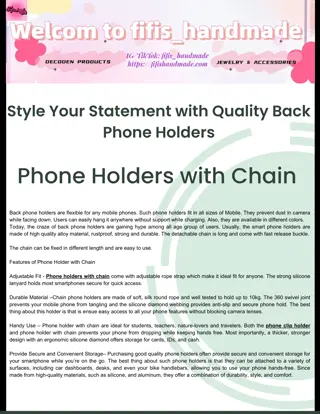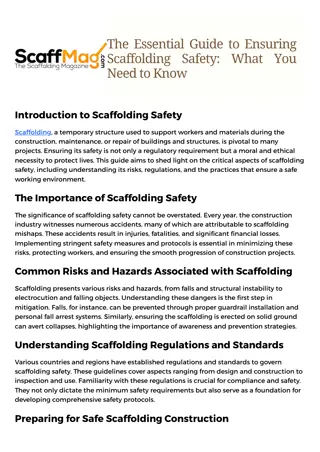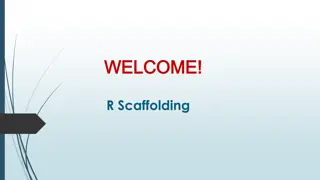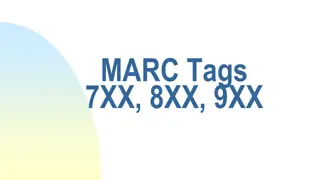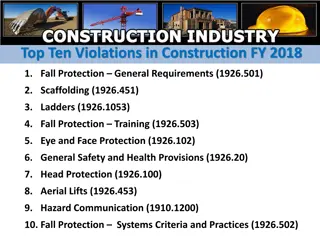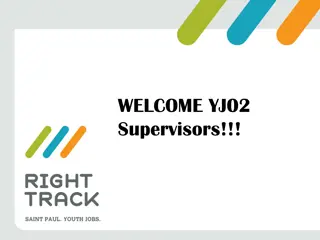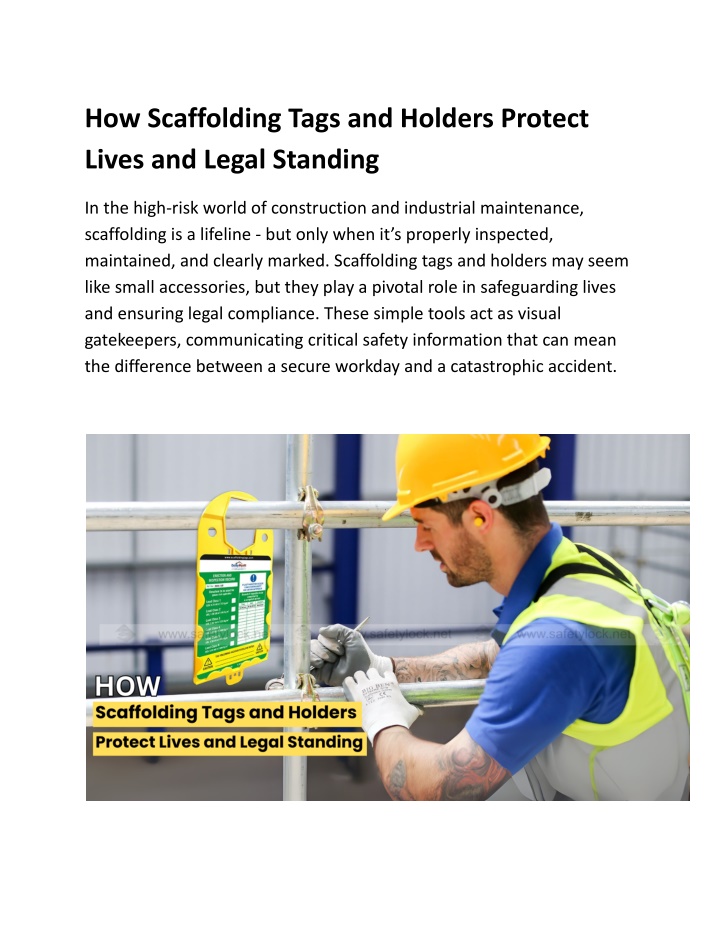
How Scaffolding Tags and Holders Protect Lives and Legal Standing
In the high-risk world of construction and industrial maintenance, scaffolding is a lifeline - but only when itu2019s properly inspected, maintained, and clearly marked. Scaffolding tags and holders may seem like small accessories, but they play a p
Download Presentation

Please find below an Image/Link to download the presentation.
The content on the website is provided AS IS for your information and personal use only. It may not be sold, licensed, or shared on other websites without obtaining consent from the author. If you encounter any issues during the download, it is possible that the publisher has removed the file from their server.
You are allowed to download the files provided on this website for personal or commercial use, subject to the condition that they are used lawfully. All files are the property of their respective owners.
The content on the website is provided AS IS for your information and personal use only. It may not be sold, licensed, or shared on other websites without obtaining consent from the author.
E N D
Presentation Transcript
How Scaffolding Tags and Holders Protect Lives and Legal Standing In the high-risk world of construction and industrial maintenance, scaffolding is a lifeline - but only when it s properly inspected, maintained, and clearly marked. Scaffolding tags and holders may seem like small accessories, but they play a pivotal role in safeguarding lives and ensuring legal compliance. These simple tools act as visual gatekeepers, communicating critical safety information that can mean the difference between a secure workday and a catastrophic accident.
The Life-Saving Function of Scaffolding Tags Every scaffold erected on a job site carries inherent risks. Whether it s due to weather exposure, structural fatigue, or improper assembly, scaffolds must be regularly inspected to ensure they remain safe for use. Scaffolding tags - typically color-coded and placed in holders at access points - serve as immediate indicators of a scaffold s status: Green tags signal that the scaffold is safe and has passed inspection. Yellow tags indicate restricted use or specific conditions (e.g., partial completion or limited load capacity). Red tags warn that the scaffold is unsafe and must not be used.
This clear, visual system helps prevent unauthorized access and ensures that workers are informed before stepping onto elevated platforms. In fast-paced environments, where verbal communication can be missed or misunderstood, tags provide a consistent and visible safety checkpoint. Legal Protection Through Documentation and Visibility Beyond physical safety, scaffolding tags and holders serve a vital legal function. Regulatory bodies such as OSHA (Occupational Safety and Health Administration) in the U.S., and similar agencies worldwide, mandate regular scaffold inspections and proper documentation. Tags are not just visual cues - they re part of a documented safety protocol. Each tag typically includes: Inspection date and time Inspector s name or ID Notes on scaffold condition or limitations This information creates a paper trail that can be critical in the event of an audit, incident investigation, or legal dispute. If a worker is injured on a scaffold, the presence (or absence) of a tag can determine liability. A properly tagged scaffold shows that safety protocols were followed, inspections were conducted, and risks were communicated - helping protect companies from negligence claims and regulatory penalties.
Holders: The Unsung Heroes of Tagging Systems While tags get most of the attention, Scaffolding Tag holders are equally important. These durable frames are mounted at scaffold entry points and designed to withstand harsh conditions - rain, dust, UV exposure, and physical impact. A tag without a holder can easily be lost, damaged, or
overlooked. Holders ensure that tags remain visible, secure, and legible throughout the scaffold s lifecycle. Some advanced holders even feature locking mechanisms or tamper-proof designs, adding an extra layer of accountability. In multilingual or global job sites, holders can also accommodate bilingual tags or pictograms, ensuring clarity across language barriers. The ROI of Safety and Compliance Investing in scaffolding tags and holders isn t just about avoiding accidents - it s about building a culture of accountability. When workers see that safety is taken seriously, they re more likely to follow protocols, report issues, and engage in responsible behavior. This reduces downtime, improves morale, and enhances your company s reputation.
From a legal standpoint, proactive tagging systems demonstrate due diligence. They show regulators, insurers, and clients that your organization prioritizes safety - not just in words, but in practice. Final Thoughts Scaffolding tags and holders may be small, but their impact is enormous. They protect lives by preventing unsafe access, and they protect legal standing by documenting compliance. In an industry where one misstep can lead to tragedy or litigation, these tools are not optional - they re essential. Whether you're a site manager, safety officer, or business owner, investing in a robust tagging system is one of the simplest, most effective ways to uphold safety and accountability. Because when it comes to scaffolding, visibility isn t just helpful - it s lifesaving.


